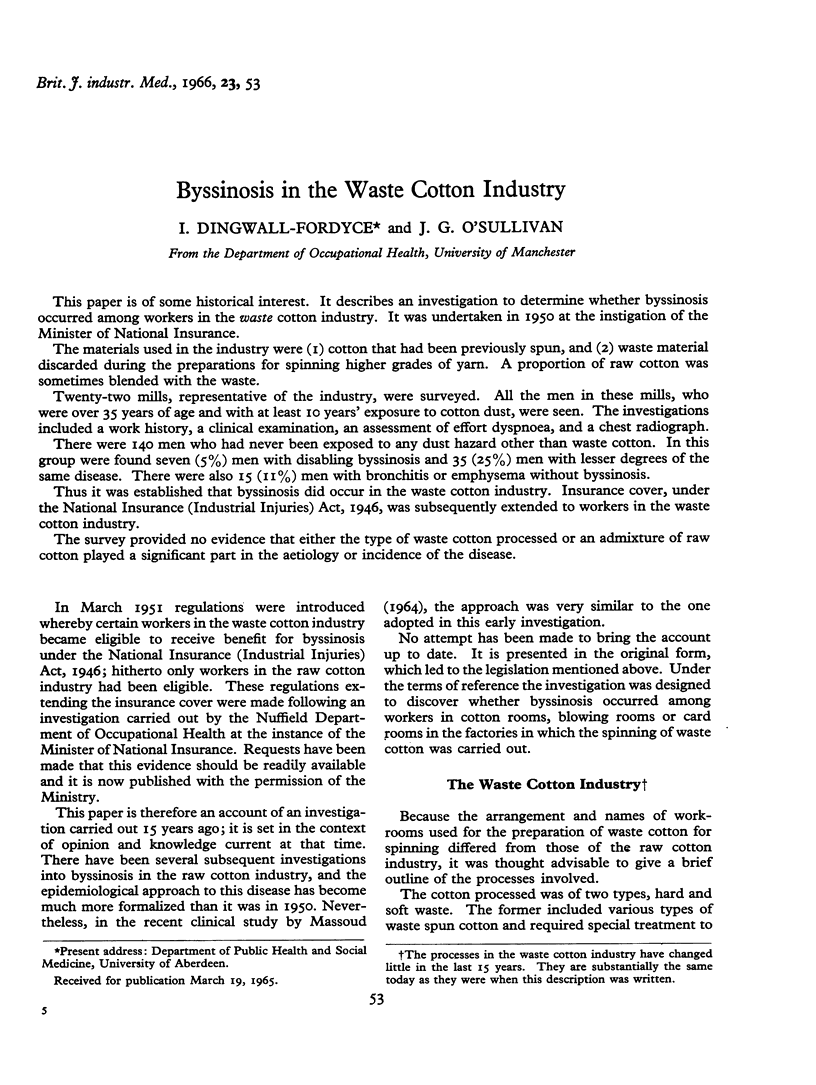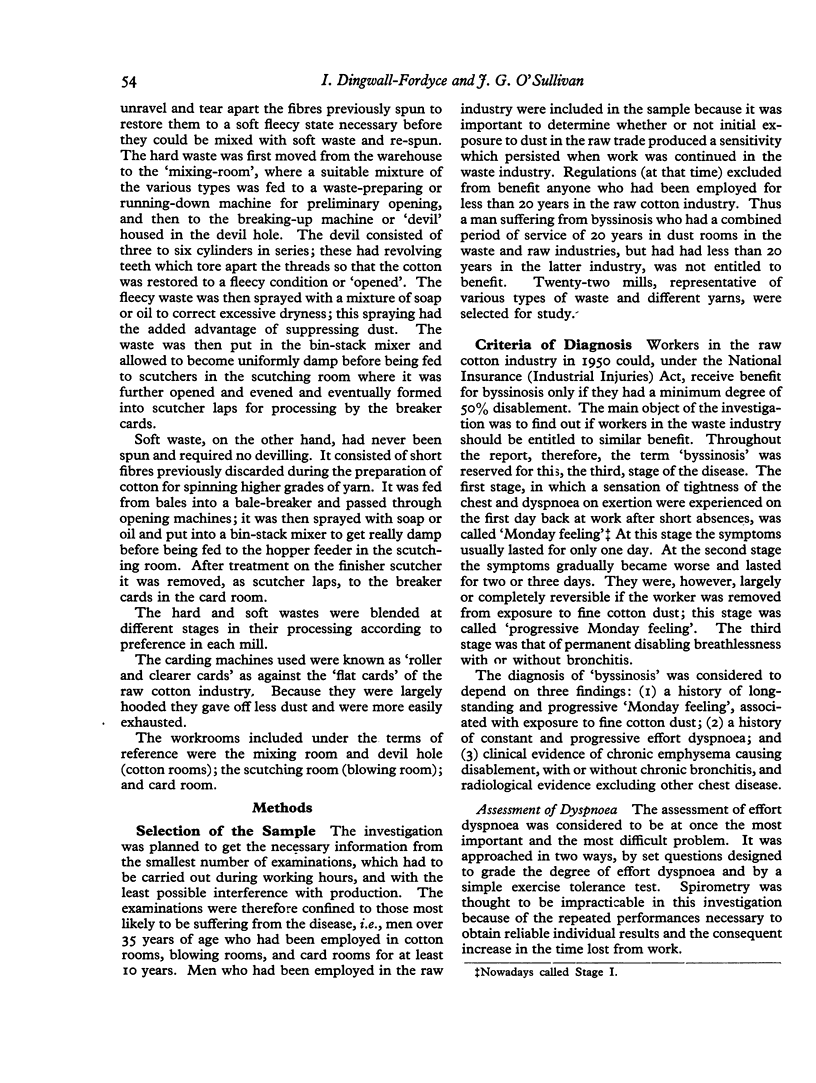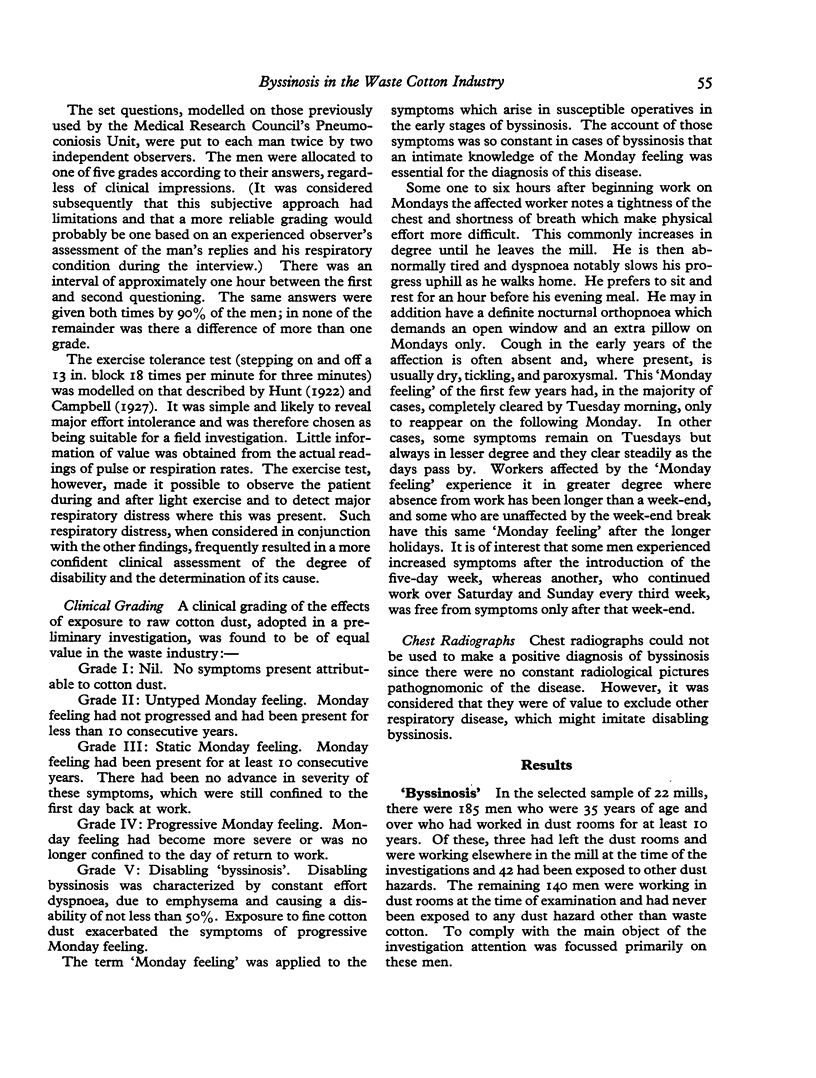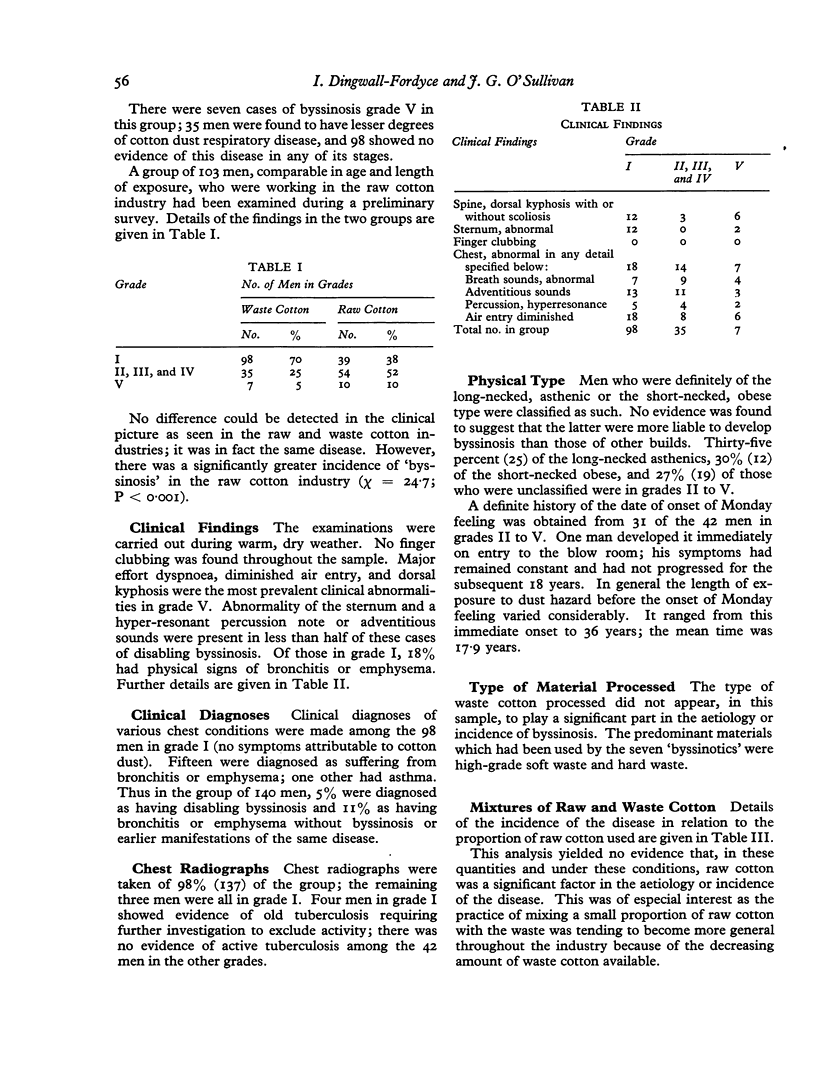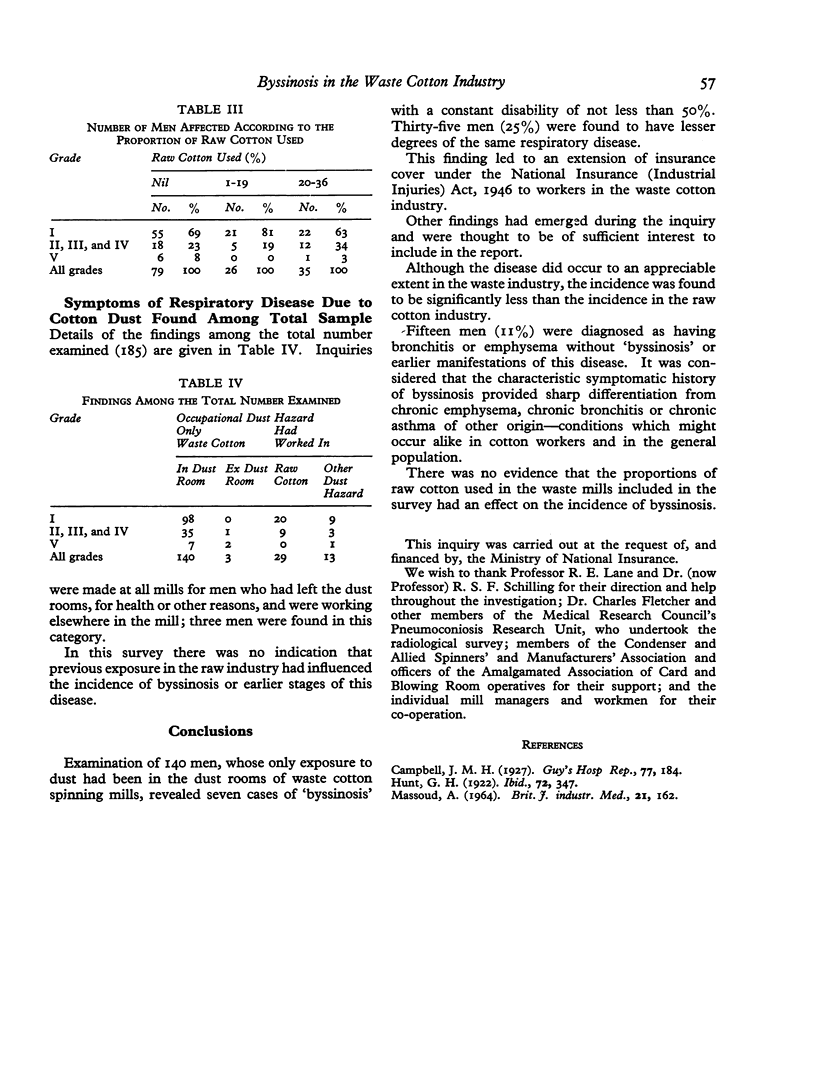Abstract
This paper is of some historical interest. It describes an investigation to determine whether byssinosis occurred among workers in the waste cotton industry. It was undertaken in 1950 at the instigation of the Minister of National Insurance.
The materials used in the industry were (1) cotton that had been previously spun, and (2) waste material discarded during the preparations for spinning higher grades of yarn. A proportion of raw cotton was sometimes blended with the waste.
Twenty-two mills, representative of the industry, were surveyed. All the men in these mills, who were over 35 years of age and with at least 10 years' exposure to cotton dust, were seen. The investigations included a work history, a clinical examination, an assessment of effort dyspnoea, and a chest radiograph.
There were 140 men who had never been exposed to any dust hazard other than waste cotton. In this group were found seven (5%) men with disabling byssinosis and 35 (25%) men with lesser degrees of the same disease. There were also 15 (11%) men with bronchitis or emphysema without byssinosis.
Thus it was established that byssinosis did occur in the waste cotton industry. Insurance cover, under the National Insurance (Industrial Injuries) Act, 1946, was subsequently extended to workers in the waste cotton industry.
The survey provided no evidence that either the type of waste cotton processed or an admixture of raw cotton played a significant part in the aetiology or incidence of the disease.
Full text
PDF